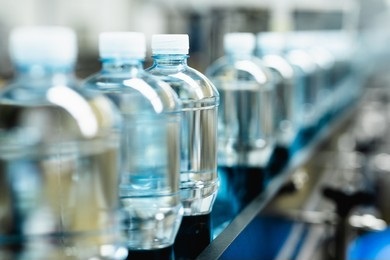All in the water production and water supply process and water contact with the connection of water stopping materials, plastic and organic synthetic pipe, fittings, protective coatings, water quality processors, and other new materials can be considered as water packaging systems. Water packaging materials are not only used in an extremely wide range, and water quality, water odor, and human health is closely related.

Like other bagged food, water packaging materials are added with stabilizers, plasticizers, antioxidants, etc. This improves the performance of the packaging materials. Still, in the water distribution system, water storage packaging, and water contact, additives will migrate into the water to varying degrees, making water quality affected by packaging materials varying degrees.
Therefore, Lifeasible detects the water quality characteristics and differences of drinking water packaged with different materials (polyethylene, polyamide, polypropylene, polyethylene glycol terephthalate, polyvinyl chloride, polypropylene film, polycarbonate) from various aspects and evaluates the barrier performance, safety, and compatibility of packaging materials through the measurement of several indicators.
| Indicators | Methods |
| Odor | The odor of drinking water is mainly caused by organic substances (volatile organic compounds) in the water. It is generally believed that the organic substances mainly originate from the packaging bottle itself. During the long-term contact between the water and the packaging bottle, the organic substances in the packaging bottle will migrate into the water. Therefore Lifeasible provides analysis of trace organics in drinking water in different packaging materials to compare and evaluate the safety of other packaging materials and their suitability in water production, transportation, and storage. |
| Chemical indicators | Lifeasible tests a wide range of chemical indicators for drinking water (mineral water, purified water, natural water) in different packaging materials, including pH, ionic concentration, total organic carbon (TOC), conductivity, fluorescence intensity, and concentration of each anion/cation (Ca2+, Mg2+, Na+, K+, Cl- and SO42-). And we used principal component analysis, correlation analysis, and regression analysis to evaluate the correlations between water quality and different packaging materials. |
| Microbial indicators | The production process of packaged drinking water and the different barrier and safety of different packaging materials can cause the potential risk of microbial contamination in water. Therefore, Lifeasible can test microbial indicators in packaged drinking water to assess the safety of drinking water and the suitability of packaging materials. |
The presence of microorganisms, volatile organic compounds, and phenolic compounds on the surface of packaging materials, which are important media in contact with water, can, directly and indirectly affect the quality of packaged water. Lifeasible can provide water quality index tests for drinking water packaged in different materials, assessing the barrier, safety, suitability, and compatibility of packaging materials through organoleptic, chemical, and microbiological indexes. Please contact our staff to determine the best solution for you.